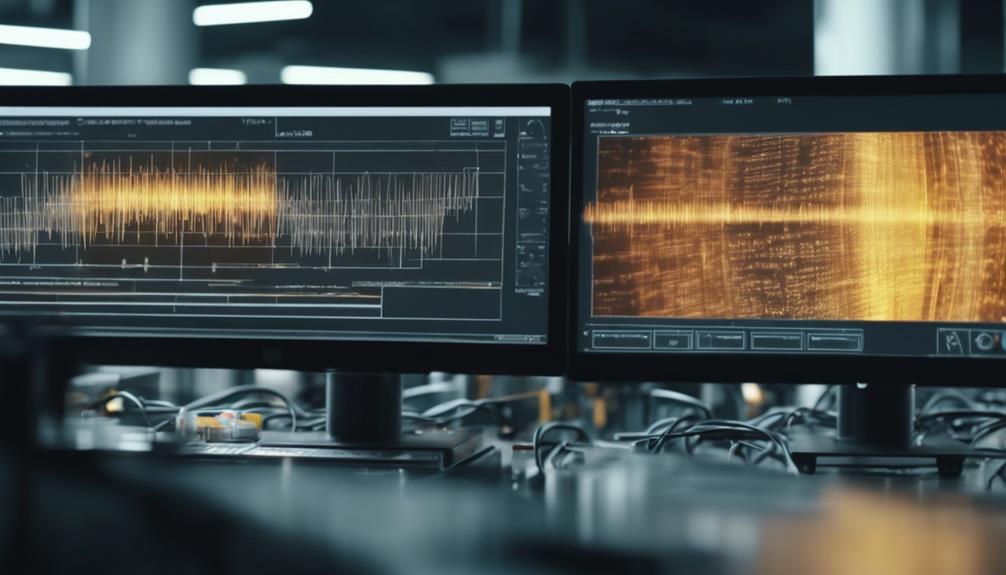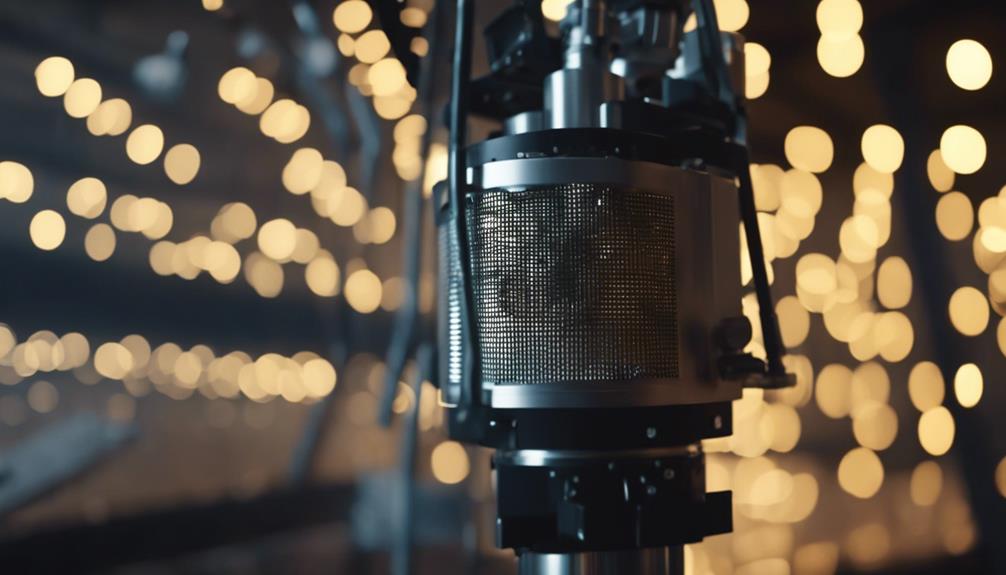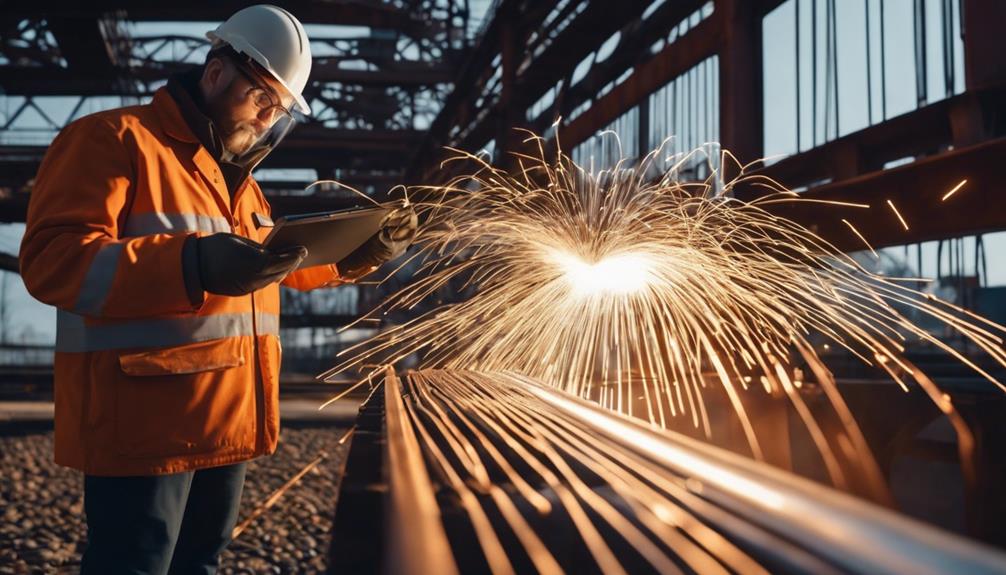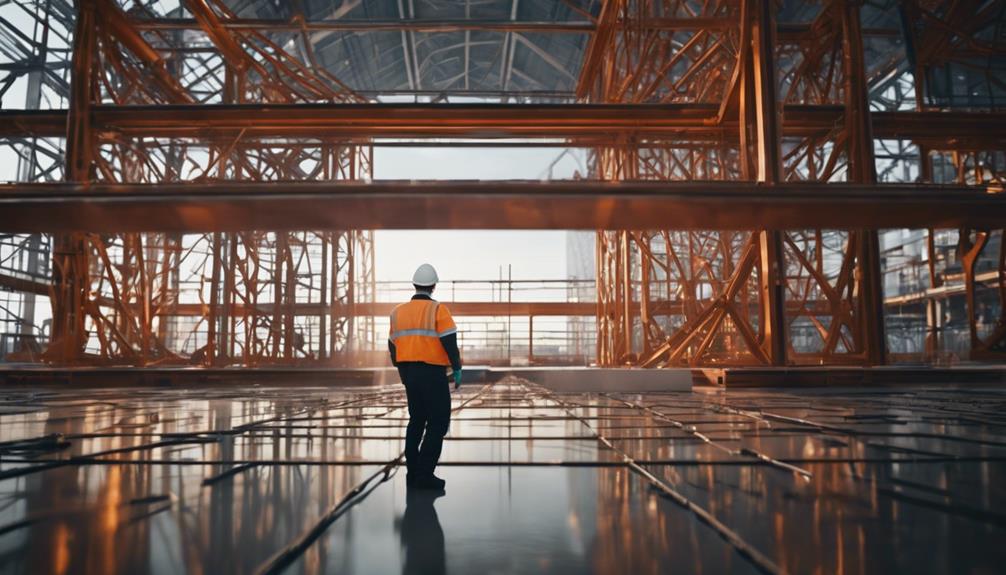Ready to learn about the top 10 cool ways experts inspect buildings and structures? Let's jump right in!
Ground Penetrating Radar is like X-ray vision for the ground. It helps us see what's hidden beneath. Then there's Infrared Thermography Inspection. It's a fancy name for a tool that uses heat patterns to find problems.
Have you heard of Ultrasonic Testing? It's like a bat's super hearing power, but for buildings. It uses sound waves to find issues. Laser Scanning is like taking a super detailed 3D picture of a structure, to study it closely.
Then there's Acoustic Emission Testing. It listens for sounds that shouldn't be there, like a super-sensitive ear. Radiographic Testing is like a doctor's X-ray, but for buildings. It helps us see inside without breaking anything.
Vibration Analysis Technique is pretty cool. It's like feeling a building's pulse to see if it's healthy. Dye Penetrating Inspection is like a detective's tool. It uses a special dye to highlight cracks and damage.
And lastly, the good old Visual Inspection. It's simple – experts just look closely at the structure.
So there you have it! These are the 10 amazing techniques experts use to inspect buildings and structures. Cool, right?
Key Takeaways
- The Ground Penetrating Radar Technique is like a super X-ray for buildings, helping us spot problems early by providing on-the-spot pictures.
- The Infrared Thermography Inspection is sort of like a detective for hidden problems such as water leaks or insulation gaps, helping us make smart choices.
- Ultrasonic Testing Methods are like super hearing for buildings, using sound waves to find hidden problems like cracks and rust. This method is even more powerful when used with Phased Array Ultrasonic Testing.
- Laser Scanning is like a measuring tape on steroids, giving us super accurate 3D measurements for buildings. This helps us plan the best repairs and maintenance.
- The Vibration Analysis Technique is like a doctor's stethoscope for buildings, checking their movements to find hidden problems and make sure they're strong and safe.
Ground Penetrating Radar Technique
Let's discover a cool method called Ground Penetrating Radar (GPR). This technique uses something called electromagnetic waves – it's a bit like having super sight for buildings! This cool gadget can look deep into stuff like concrete, showing us things hidden inside like metal bars, empty spaces, and other hidden things.
Think about it as a way to check how strong your building is, and you don't even need to damage anything! GPR shows pictures in real-time, letting us know if the building is strong or not right away without needing to break anything. It's a quiet, quick, and great way to check if the concrete is good quality and spot possible problems before they get too big.
But there's more to GPR. It's not just a gadget, it's a game changer for checking buildings. It gives detailed info about what's going on inside concrete structures. It's like having a superpower that lets you see through concrete. If you care about keeping your buildings strong and safe, then you'll love GPR. Let's learn more together to make our buildings even better!
Infrared Thermography Inspection
Infrared thermography inspection is like a cool, high-tech tool used to find hidden problems in buildings. Think of it like having superhero vision that can see things normal eyes can't. It can find things like water leaks, gaps in insulation, and even areas that are overheating.
This tool is super handy and doesn't harm the building at all. You can check out a lot of space in a short amount of time. It's perfect for keeping a building in great shape, saving energy, and studying how a building is built.
Thanks to infrared thermography, you can check the health and strength of walls, roofs, and other parts of a building. It gives you important information that helps you make smart decisions. You're not just looking at your buildings, you're getting to know them better.
In our group of building inspectors, we're not just using tools. We're discovering new ways to use them, always trying to do more. So, start using infrared thermography, and make your building checks even better.
Ultrasonic Testing Methods

Ultrasonic Testing Methods, or UT for short, is a cool technique that uses sound waves to find hidden flaws in different things. It's like being a detective, but instead of looking for clues, you're listening for them!
This method is really handy because it can measure how thick something is without breaking it. It's also great at finding issues like cracks or rust in all sorts of materials. And the best part? It doesn't just look at the surface, it checks inside too!
Think of UT like a superhero's X-ray vision. It can see things that we normally can't, like hidden cracks, tiny holes, or even areas that have become rusty. This is really important because these are things that could cause problems down the line.
But the fun doesn't stop there! Sometimes, UT works with another method called Phased Array Ultrasonic Testing (PAUT). This is like taking a map of all the hidden issues. It's very precise and helps to figure out exactly where and how big the problem is.
Many industries like space exploration, oil production, building, and manufacturing use UT and PAUT. They help make sure everything is as good as it can be.
Laser Scanning for Structures
Ever wondered how we get super accurate 3D measurements of buildings and structures? Well, we use a cool tech called laser scanning. This tech can measure super accurately, up to 2mm precision, and it collects loads of data points to help us study every tiny detail of a building.
Think about it like this: You know when you're building a Lego set and you need to follow the instructions exactly? Well, with laser scanning, we can get that same level of detail but for real-life buildings. So, we can spot any tiny mistakes or issues that might cause problems later on.
But there's more! The data we collect with laser scanning doesn't just help us spot problems. It also helps us make digital models, which are like super detailed 3D blueprints of a building. This helps us study the building, plan any needed repairs and make sure it lasts a long time.
Acoustic Emission Testing

Get ready to dive into the exciting world of Acoustic Emission Testing, also known as AET. It's like a super cool detective tool used by scientists and engineers.
Imagine being able to spot tiny damages in structures or materials before they become big problems. AET can tell you exactly when and where a small crack starts or how a material changes shape when it's under pressure.
With this method, you're not just watching – you're catching issues early. This means we can keep things safe and save money at the same time.
Understanding Acoustic Emission Testing
Let's explore Acoustic Emission Testing (AE), a game-changing method that detects hidden damage in structures. AE listens to the sounds made by buildings or bridges, like a doctor listens to a heartbeat. It can hear signs of harm, like rusting or cracks, even if we can't see them yet. AE helps us prevent accidents by spotting problems early.
Think of AE as a super-powered GPS. It doesn't just find problems – it tells us exactly where they are. This helps us fix the right things at the right time. AE lets us keep an eye on buildings in real-time, under different weights and conditions. It helps us understand how damage is happening over time.
AE isn't just about watching – it's about planning ahead. It works hand in hand with other inspection methods, helping us stay one step ahead of potential problems. With AE, we're being proactive in keeping our structures safe.
Benefits of Acoustic Emission
Why is Acoustic Emission Testing super important for keeping things safe? It's easy. This awesome method offers cool benefits like spotting damage early, helping with regular upkeep, and giving clear info about a structure's health.
Imagine you spot a small crack or rust early. You can fix it before it turns into a big issue. This is what Acoustic Emission Testing does. It lets you keep an eye on structures in real-time, reducing risks and making upkeep easier. It's a harmless way of testing, able to find even the tiniest flaws. That's why it's a favorite tool in fields like space travel, building, and oil & gas.
| Cool Things About Acoustic Emission | What It Means |
|---|---|
| Spots Damage Early | Finds issues like cracks or rust quickly |
| Helps With Upkeep | Lets you watch structures all the time for easier maintenance |
| Harmless Testing | Doesn't hurt the structure while testing |
| Super Sensitive | Can find even the smallest flaws |
That's why Acoustic Emission Testing rocks – it keeps things safe and strong.
Applications in Structural Analysis
Wondering why Acoustic Emission Testing is special in checking building safety? It's really simple.
This testing method is like a superhero, it hears the sounds that structures make when they're under pressure. This allows us to spot any problems, like cracks or rust, before they become big issues.
So, instead of waiting for a problem to show up, we can catch it early and fix it. This testing system, which doesn't disturb the structure, is very crucial to make sure that our buildings are safe and reliable.
With Acoustic Emission Testing, we're not just getting by, we're doing great!
Magnetic Particle Inspection

Magnetic Particle Inspection, or MPI for short, is an amazing way to find really small problems in materials that magnets stick to. These problems can't be seen with just your eyes. A lot of industries use it, like ones that make planes, cars, buildings, and other stuff.
Here's how it works: MPI doesn't just find problems on the surface of materials, but it can also find issues that are just below the surface. It's as if you have a superpower like x-ray vision. Magnets and small iron particles team up to show you where the problems are. They can find things like cracks or other defects, no matter how small they are. This helps make sure that the things we make are safe and high quality.
Not only is MPI really good at finding problems, but it's also not very expensive. It's a game-changer because it gives reliable results without costing too much money. Plus, it can be used on a lot of different things. This makes it really important in many industries.
Radiographic Testing in Structures
Get ready to dive into the exciting world of looking inside buildings without breaking them!
It's called Radiographic Testing. Picture it like a superhero power – using X-rays or something called gamma rays, we can find hidden problems like breaks or empty spaces that could make a building unsafe.
And the best part? It doesn't damage the building at all!
This amazing tool gives us super clear pictures to check if a building is healthy. Isn't that cool?
Understanding Radiographic Testing
Diving into the world of Radiographic Testing or RT, it's like a super cool detective that uses X-rays or gamma rays (like the ones used in hospitals) to uncover hidden secrets in all sorts of materials. Think of it like a super-powered X-ray vision that helps us spot problems like cracks, or empty spaces that could weaken the materials. And it's not just about spotting problems—it's all about making sure things are safe and top-notch.
RT gives us a crisp snapshot of what's happening inside vital parts like welds and castings. But don't get too excited! It's not something you can do at home. RT needs special machines and trained people to carry out the tests without any danger and make sense of what the images are telling us. In a nutshell, it's a fantastic tool to keep our buildings and structures sturdy and safe!
Benefits of Radiographic Testing
Radiographic Testing is like a detective in the world of building and construction. It uses X-rays or gamma rays, similar to the ones doctors use to see inside your body, to look inside materials. This helps us find hidden problems like cracks or empty spaces that we can't see with our eyes.
This method is really important because it helps make our buildings safer. Think about it like a super tool that gives us detailed pictures of our structures. This way, we can spot any issues and fix them before anything goes wrong.
Basically, Radiographic Testing isn't just about checking materials, it's also about making sure our buildings are strong and safe. So, when we use Radiographic Testing, we're showing that we care about the strength of our structures.
Vibration Analysis Technique

Vibration analysis is a cool technique that checks how things shake or move. It's like a doctor's check-up but for buildings or structures. It doesn't harm or damage anything, just like when a doctor uses an ultrasound machine to see inside a person's body.
Think of vibration analysis as a special way to understand a structure's dance. It allows us to learn its rhythm and other important features. We get to know how stiff or flexible it is, how weight is spread out, and what it's made of.
The real magic of this technique is how it spots hidden problems. Just like a super-detective, it can find small cracks, rust, or loose parts that may be dangerous if not fixed. With regular checks, it's like having a guardian angel that always looks out for signs of trouble.
In simple words, vibration analysis is a friend that helps keep structures strong and safe. It's part of a group that cares about accuracy, learning, and always ensuring safety.
Visual Inspection Methods
Imagine you're like a detective, but instead of solving crimes, you're solving the mysteries of buildings and structures. Your job is to look really closely at these structures and identify any problems or damages. You'll spot things like worn-out materials and changes in the shape of the structure. This is what we call visual inspection methods.
With just your eyes, you can spot problems on the surface. It's a quick and inexpensive way to find any issues. If you do find something, it may mean that more detailed checks are needed. But don't worry, you don't need to exaggerate or repeat the same things over and over again. It's all about keeping it simple and efficient!
Assessing Material Deterioration
Looking at buildings and structures, using your eyes to check them is a good, easy, and cheap way to find problems early. This can help you see things like cracks, rust, or parts breaking off before they get too big and dangerous.
By doing these checks often, you're not just looking, you're helping your buildings last longer. You're being smart and taking care of your buildings before they get too damaged. This isn't just about saving money, it's about being wise.
Identifying Structural Damages
When it comes to checking buildings for damage, visual inspection is our first step. It's like being a detective, using our eyes and brains to spot things that don't look right. This could be things like cracks, rust, or weird colors on the building. This is a cheap and quick way to see if there might be bigger problems hiding beneath the surface.
We call this nondestructive testing (NDT). It helps us find issues on the outside that could hint at bigger problems inside the structure. It's more than just looking – it's about understanding what we see, figuring out what it means, and deciding what to do next. It's a very important job in the world of checking buildings. When you do this, you're not just watching. You're playing a key role.
Understanding Deformation Patterns
In the world of building inspection, spotting changes in how a building looks or feels is like wearing special glasses that can see problems. You're not just looking at a building, you're reading it like a mystery book, finding clues like cracks, bends, or uneven parts that could mean there's a problem.
A type of building material, called reinforced concrete, can show different signs of problems. It's like learning a new language, where each sign tells a story of where the building might be under too much stress, or where the material isn't as strong as it should be. It's not just about spotting these signs, but understanding what they mean. This knowledge is your superpower, helping you to keep buildings safe and strong.
Think of yourself as a superhero, keeping buildings and people safe.
Dye Penetrant Inspection Technique
The Dye Penetrant Inspection is a cool way to find tiny flaws or breaks on the surface of things. It's a method used in nondestructive testing (NDT), which means it doesn't damage or change the thing we're checking. This method helps us find even the tiniest faults that we can't see with our eyes alone. Cool, right?
Here's how it works. We put a special dye on the object's surface. This dye can sink into any surface breaks, just like a detective finding hints. After we clean away the extra dye, we put on something called a developer. This makes any problems, like cracks or little holes, easy to spot because they show up against the background. It's like having a special power to see things that are usually hidden.
This technique is used a lot in things like making airplanes, cars, and other stuff. It helps to make sure that everything they make is of good quality. It's not just about checking things out; it's about making sure everything is safe and works like it's supposed to. So, if you ever come across the Dye Penetrant Inspection method, know that it's a really important tool to ensure things are made right.
Conclusion
In short, new ways of checking buildings and structures are changing the game. Tools like Ground Penetrating Radar and Infrared Thermography make it easier to see what's going on.
Ultrasonic Testing and Laser Scanning help make things more accurate and fast. Other cool methods include Acoustic Emission, Radiographic Testing, and Vibration Analysis.
There's also the simple Visual Inspection and Dye Penetrant techniques. All these help to find problems early on. Try out these cool new gadgets and improve your building checks.


